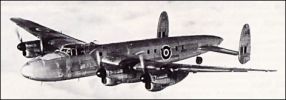
Avro Lancastrian531 viewsIn 1944 Avros, at their Waddington factory, began a conversion of the Lancaster, to follow that, which had been made by Victory Aircraft in Canada. This was to make an aircraft for long-range navigational flights. The nose and tail sections were modified and extra fuel tanks added. The new machine was named the Avro Lancastrian; and was delivered to The Empire Air Navigation School at RAF Shawbury.The first plane was called Aries, and it set off on the first, circumnavigation of the world. QANTAS airline of Australia used Lancastrians, on their London to Australia flights. BSAA also used Lancastrians on regular flights to South America; as did Flota Aerea Mercante Argentina. The Canadian Authorities had established a regular route from Canada toBritain earlier. This plane had a range of 4,100 miles with a 7,500 lb payload.
|
|
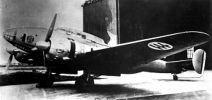
CANT Z 1018 Leone886 viewsIt was clear from the beginning of the flight test program that the performance of the Leone was so high that a production order was certain. This materialized in 1941 in the form of a contract for 300 aircraft to be powered by two Alfa Romeo 135 RC.32 or Piaggio P.XII RC.35 engines, depending on availability. In the event that the Alfa Romeo radial engine was available in larger quantities, and production started in 1943 with a powerplant of two such engines. By the time of the Italian armistace in 9/43 however, deliveries had reached only 10 pre-production and five production warplanes, and a few of these machines saw limited service with the 101st Bombardment Group. Such was the potential of the basic design that two important derivatives were proposed. The first of these was a heavy fighter was a fixed forward armament of 7 20mm cannon as well as a defensive outfit based on three 12.7mm trainable machine guns. The second was a night-fighter with German Lichtenstein SN-2 radar with the antenna in the nose.
|
|
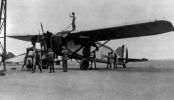
Caproni Ca.101804 viewsThis light bomber for 'colonial' warfare was used in the invasion of Ethiopia. It was a larger development of the Ca.97.
|
|
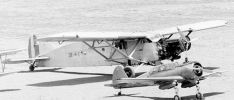
Caproni Ca.111909 viewsUtilized in the colonies in Africa for postal transportation. Internal structure covered in wood. Single-engined development of the Ca.101, used mainly as utility transport. Some had float landing gear. 149 built.
|
|
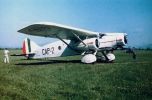
Caproni Ca 133902 viewsThe Ca 133 was modernised version of the Ca 101, cleaned up aerodynamically and given improved engines in an attempt to prolong the type's career as an 16 passenger airliner and second line or "colonial" bomber and transport. Bomber aircraft deployed as military transports, with an interior fitted out to accommodate 18 fully equipped troops, were redesignated Ca i33T and, similarly, conversions for use in an ambulance role were designated Ca 133S. In 1938 a small number of an improved version of the Ca 133 was introduced under the designation Ca 148, serving initially in East Africa, and some survived to fly with the post-war Italian air force.
|
|
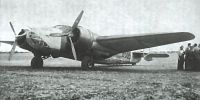
Caproni Ca 135771 viewsThe prototype made its first flight in 4/35 powered by two 800 hp Isotta-Fraschini Asso XI RC Vee engines and driving a wooden two-bladed propeller. The propeller was soon exchanged for a three-bladed metal propeller subsequently accepted for all production versions. The Italian air force felt the Ca.135 had potential and in 1936 ordered 14 examples of the Ca.135 Tipo Spagna (Spanish model), presumably as it was intended to undertake an operational evaluation in the Spanish Civil War. However, none of the aircraft served with the Italian air force in Spain. Trials revealed that the Fiat engines were unreliable and failed to improve performance as significantly as the Piaggio engines, so the few Fiat powered bombers were withdrawn from front-line service and transferred to bomber schools. Thus production of the Ca.135/P.XI was undertaken for a sole export customer, which was the Hungarian air force that received 100 of the type in 1939 and 1940. These aircraft operated with limited success against the Soviets.
|
|
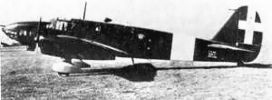
Caproni Ca.309692 viewsSmall twin-engined reconnaissance bomber. The Ca.309 was a low-wing monoplane of mixed construction and with fixed landing gear. 243 were built.
|
|
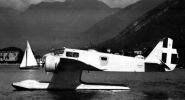
Caproni Ca.316809 viewsship-borne maritime reconnaissance float aircraft, Catapult reconnaissance seaplane version of the Ca.309 series. 14 built.
|
|
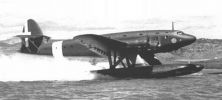
CANT Z 511 Long Range Hydroplane889 viewsThe Cantz 511 Long Range Cargo Hydroplane was first designed by Fillipo Zappata. The first flight took place in Monfalcone (Trieste, north-eastern Italy) in October 1940. It's first operational start took place in February 1942 (Italian territory). On January 1942, the hydroplane had to be employed on different long range routes, as the war against the United States prevented the civil use of CANTZ511 in the Atlantic area. Some had the odd idea of a spectacular mission in the skies of New York, launching one ton of tri-coloured leaflets. Some others thought about a non-stop Rome-Buenos Aires raid (8000 km!). None of these projects was carried out. And it was a real pity, as the test pilot Mario Stoppani - between the end of February and the beginning of March 1942, during the last trials - succeeded in taking off and landing (full loaded) with very rough sea, with 1.5 metres high waves and winds blowing at 55-65 kmh.
|
|
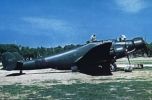
CANT Z 1007649 viewsThe three-engine formula, much developed by Italian manufacturers, had another noteworthy representative in the CANT Z. 1007, the bomber that, together with the SM.79 and BR.20, constituted the Regia Aeronautica's standard equipment during the conflict. A total of 560 aircraft were built in three production series from 1939 to 1943. The Alcione was widely used on all fronts, proving to be an effective aircraft, despite the emergence of problems of structural weakness in extreme climates, such as Africa and Russia, due to its being built entirely of wood. in 10/40, the Z.1007 was largely used in the invasion of Greece, followed by service in the Mediterranean, North Africa and especially against Malta. On the Russian front, the use of the three engine bombers was sporadic and intermittent. At the time of the armistice, the few remaining Z.1007's were split about evenly between the pro-Axis and Co-Belligerent air forces. At its height, the Z.1007 was used by 4 Stormos, 7 Groups and 2 squadrons.
|
|
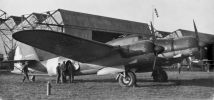
CANT Z.1015624 viewsDevelopment of the Z.1007 with 1500hp Piaggio P.XII RC35
|
|
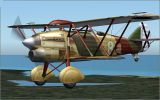
Fiat CR-32 Escuadrilla Blanco X Grupo de Caza Autonomo Baleari808 viewsFiat CR-32 Escuadrilla Blanco X Grupo de Caza Autonomo Baleari , one of the skins included with 3 models and 11 liveries on sale at:
http://www.icarusgold.com/cr32.htm
|
|
|
|